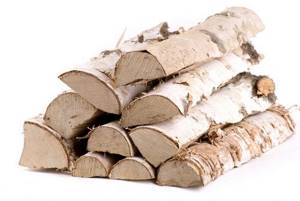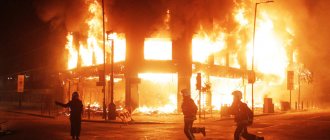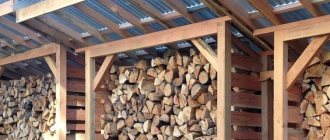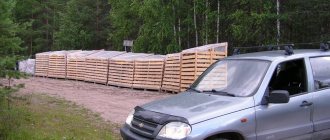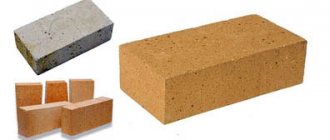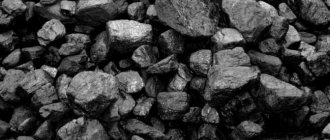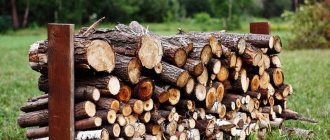What is the best way to light a stove? All types of solid fuel for stoves. Types of coal, pros and cons of use. The best wood.
In solid fuel stoves, wood, peat, and coal (brown or stone) are burned. The choice is most often made based on the availability of fuel and the economic feasibility of its use. Not all types of solid furnace fuel are used immediately after mining or cutting. The energy efficiency of the unit will be much higher if the fuel is properly prepared. It must be dried and shaped into a form convenient for storage and placement in the firebox.
Types of coal. Pros and cons of using
Some solid fuels are transformations of the same organic material. For example, peat first forms in swamps from dead plant matter. It is then carbonized and turns into brown coal. At the next stage - into coal.
The disadvantages of peat and brown coal are a large amount of surface moisture. If you dry them well, they will crumble. This can be eliminated by pressing peat into briquettes. However, when burned, this fuel produces a lot of ash. This makes caring for the stove difficult: you constantly need to clean the grates and ash pan, but even this is made difficult by the fact that the ash is very light and is sprayed around the room.
Peat in briquettes is compressed with sawdust, which makes it of higher quality and convenient for storage and use. Brown coal is not suitable for heating furnaces, so it is practically not used. In addition, it has a low calorific value (3000±500 kcal/kg) and, accordingly, efficiency.
Heating with regular wood
Firewood has been used for heating for a very long time; it is a high-quality fuel for the home and bathhouse, barbecue and barbecue. The environmental friendliness of firewood will always be 100%, and this fuel has plenty of other advantages. Let us note the main advantages of firewood, without delving deeply into this topic:
- First of all, I would like to say that the process of harvesting, drying and storing firewood is understandable to everyone. From an early age we know how to look for firewood, collect and light it.
- Lighting wood is not difficult, even when it is damp. Some tree varieties can burn in high humidity, giving off heat.
- The cost of firewood is low, even if you do not go through the entire harvesting cycle, but buy ready-made logs or logs. (However, until the prices of different types of fuel are compared, it will not be possible to say which is more profitable.)
- Firewood is not afraid of mechanical damage and can be stored in a woodpile in completely different ways.
- From an aesthetic point of view, the wood burns perfectly. They create a beautiful fire and soulful crackle, and when some varieties burn, a characteristic pleasant aroma appears. For open fireplaces, where the appearance of what is happening is important, this fuel is considered optimal.
- The substances released during the combustion of wood have a beneficial effect on humans, they calm the nervous system and heal the respiratory system.
strategic reserve of timber for the winter
We will also highlight the disadvantages of natural fuel:
- To obtain high heat transfer, the firewood should be well dried under natural conditions, which requires an extremely long time, for example, 1 or 2 years. The best firewood is wood that has lain in a dry shed for a couple of years.
- During long-term storage, wood loses some of its qualities, especially fragrant varieties of trees.
- Firewood takes up a lot of space; for its normal storage in the required quantity, it is necessary to build an appropriate structure.
- When using firewood, a lot of debris always appears (chips, bark, wood dust, sawdust).
Having become acquainted with the main capabilities of the two types of fuel, let's make a comparison.
Furnace firing with coal
Hard coal has better parameters than brown coal. Its calorific value is 6000±500 kcal/kg. Different varieties differ in the degree of ash content and the amount of volatile substances:
- Anthracite (low ash, low in volatile substances).
- Gas (low ash, rich in volatile substances).
- Shale (forms a lot of ash, contains a lot of moisture).
For use in home stoves, hard coal is most convenient. It stores well and does not spontaneously combust. It is enough to just pour it in the barn on the floor or in boxes. However, wood is used to ignite it, since it takes a long time to light up on its own. It should also be said about the design of the firebox. It must be designed for the use of this type of fuel. Its device is distinguished by an additional channel for supplying secondary air. Also, its role can be played by a vent or a slightly open firebox door.
Firewood or coal: which option is better?
Coal is perfect for heating boilers that are installed in a separate room or building. It is not recommended to burn this substance in a stove mounted in a living room, since coal burns for a long time and almost never burns completely. For this reason, the chimney should not be left closed to prevent carbon monoxide from entering the room. In this case, the firewood will quickly decay, producing a sufficient amount of heat. The logs burn entirely, which means you can safely close the valve without fear for your health or heat leakage through the chimney.
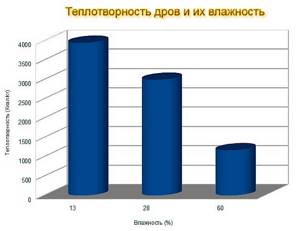
Coal is good, wood is better
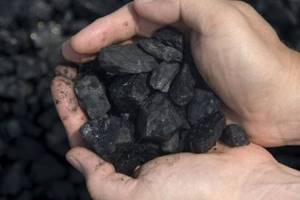
The best solid fuel for stoves is wood. It has excellent parameters for energy efficient heating:
- ash content up to 1%,
- yield of flammable substances up to 85%,
- absence of sulfur in the composition, which destroys the furnace from the inside,
- calorific value 4500 kcal/kg.
Hardwoods are difficult to split, but they produce high heat. In addition, they burn for a long time, forming smoldering coals with good heat transfer. The operating time of the firebox on one stack is longer than that of logs made from soft types of trees. Solids include:
- hornbeam, oak, yew, beech, ash, hazel.
Rules for using the oven
In addition to selecting fuel, it is necessary to take into account other rules for using the stove in order to get the most out of it. For example, if you have been away for a long time, then you need to perform several steps before starting the kindling.
- Carefully inspect all brickwork. Over time, cracks or crevices may appear in it, through which, when fuel burns, carbon monoxide will leak into the room, posing a danger to human life. If you find such defects, they must be eliminated. For this, clay mixed with sand is taken. You need to carefully cover all the cracks with this mixture and wait until it dries.
- If there is ash left in the stove from previous kindlings, it must be removed.
- The outer side of the oven walls must be wiped clean of dust, since when the structure is heated, it can cause an unpleasant odor. If the chimney needs whitewashing, whitewash it.

In addition, there are safety rules related to the regular use of both conventional and sauna stoves:
- Only specially prepared fuel can be used for kindling. It is strictly forbidden to throw household and construction waste into the firebox. This has already been mentioned above, but it is worth repeating. Plastic and various chemical spray cans are specifically prohibited - when heated, these things either emit substances hazardous to health or even explode, thereby creating a fire hazard.
- it is strictly forbidden to open the door to the firebox and the vent at the same time,
- fuel and other flammable materials must be at a distance of at least half a meter from the stove,
- To avoid overheating of the stove, it can be lit only twice or thrice a day, and each run should take no more than two hours. This applies to cases where wood is used as fuel,
- If the stove is used continuously, it is necessary to clean the chimney 2 or 3 times a month. This is necessary for high-quality removal of combustion products,
- Under no circumstances should you use various flammable substances for kindling: for example, acetone or gasoline. It can blaze so hard that the whole house turns into one big stove,
- If the family has small children or pets, the stove must be under constant supervision while the fuel is burning.
As you can see, the main part of the rules is aimed at protecting the house and the people living in it from possible dangers associated with the use of fire. If everything is carefully followed, the stove will bring you extremely positive emotions, making your home warm, cozy and comfortable. Good luck!
The best of the best: fruity, birch and linden
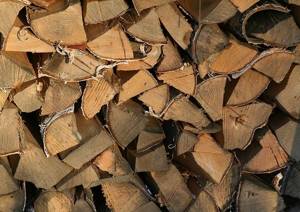
This list is also supplemented by fruit trees: pear, apple tree. They emit a pleasant aroma and burn well, but it is difficult to make kindling with any hard logs. Birch and linden are considered the best for heating a stove. Birch has a low amount of moisture even in its raw form. Logs can be placed in the firebox without drying, they will still give off great heat and will smolder for a long time.
Linden is valued for its healing properties. If you heat the stove with linden wood, you will have a healing microclimate in your house or bathhouse. Linden burns slowly, with good heat transfer. Thus, the best varieties are hardwoods, and of these, birch and linden.
Specifics of furnaces using coal
The vast majority of the real models of stoves that we remember from our grandparents were adapted for the use of wood and coal. This smoothing of the structure was carried out precisely because it was difficult to predict what would have to be used to heat the stove in each specific season. But, if you approach the construction work of the furnace in detail, then such options should vary.
The temperature inside the combustion chamber when coal is ignited is much higher than when wood is ignited. This results in the walls of the iron combustion chamber being enlarged using much thicker sheets. The combustion volume becomes larger due to the lower placement of the grate. The ash pit should be built to be larger in volume, since the amount of ash during coal operation is much greater than that of firewood.
Installation recommendations

During the installation of a heating device, several rules must be followed:
- Do not place flammable objects or explosive liquids near the heated area.
- It is better to clean the collapsible type of chimney from soot.
- The suitable diameter of the chimney pipe is approximately 15 cm, length – 5 cm.
- The chimney is equipped with an adjustable damper.
- To protect against burns, it is better to use brick shielding. The masonry will also prevent overheating of the walls and will accumulate heat.
- The floor surface made of combustible materials is protected by the foundation.
The complete instructions contain detailed installation instructions.
Types of wood by moisture level
It happens that the firewood is damp or simply not there, and the house needs to be warmed up. Then freshly cut trees are used. It is better if it is birch or aspen. Oak may also work, but it will be difficult to split. The speed and quality of kindling depends on the moisture content of the firewood.
Wood is divided into a number of categories based on moisture level:
0% - completely dry. It is rare due to the natural humidity of the air indoors or outdoors. From 7 to 20%
This importance can be achieved by drying the tree in a special chamber or by keeping it in a warm house all winter. 20 -45%, normally dried wood from a woodpile. 45-80% is fresh firewood, just cut. Winter and autumn firewood will be more humid
It is difficult to heat with them; you need to follow the kindling technology. Wood that has been in water for a long time has more than 80% humidity. It is generally impossible to drown like this.
Table - heat of combustion of wood
| Type of firewood | kWh/kg | At 20% humidity (air-dry) kWh/m3 | At 50% humidity (freshly cut) kWh/m3 |
| White beech | 4,2 | 2200 | 1930 |
| Red beech | 4,2 | 2100 | 1850 |
| Oak | 4,2 | 2100 | 1850 |
| Ash | 4,2 | 2100 | 1850 |
| Rowan | 4,2 | 2100 | 1850 |
| Birch | 4,3 | 1900 | 1670 |
| Elm | 4,1 | 1900 | 1670 |
| Maple | 4,1 | 1900 | 1670 |
| Alder | 4,1 | 1500 | 1300 |
| Willow | 4,1 | 1400 | 1230 |
| Poplar | 4,1 | 1400 | 1230 |
| Douglas | 4,4 | 1700 | 1500 |
| Pine | 4,4 | 1700 | 1500 |
| Larch | 4,4 | 1700 | 1500 |
| Fir | 4,4 | 1600 | 1400 |
| Pine | 4,4 | 1500 | 1300 |
Using wood as fuel
Nothing beats a real wood fire. The characteristic crackling sound and live flame are only possible if real logs are used.
There are several nuances on how to properly heat a fireplace with wood:
- It is necessary to follow the rules for storing firewood. You can heat the room only with dry wood, which contains as little moisture as possible. Firewood from freshly cut trees is not suitable. You need to use logs that have been drying for at least a year. Such firewood is easy to distinguish - it has a darker shade compared to other wood, and there are several cracks on its surface. The combustion process of dry wood is characterized by a clearly visible crackling sound.
- You need to choose logs of the same size. The thickness of the tree should be no more than 6-10 cm, otherwise the log will not burn well. The length should be ¾ of the combustion hole.
- To fire the fireplace, a horizontal method of laying firewood is used. The logs are placed in the combustion hole next to each other with a gap of 1 cm. The height of the stack should not exceed 30 cm.
Another important criterion for how to light a stove is the choice of wood species for lighting the fireplace.
What wood is suitable for fireplace inserts?
How warm the room will be after lighting the fireplace, how much soot and smoke there will be - all this depends on the type of wood for kindling. You need to know exactly what kind of wood is best to burn the fireplace with. The following types of wood are used for kindling:
- Hardwood. These include birch, hawthorn, pear and apple. It is a malleable wood that burns easily. During the combustion process, a minimal amount of tar and soot is released.
- Hard rocks. For long burning, it is better to choose oak, yew and beech logs. This type of firewood is difficult to split and takes quite a long time to light. But logs will burn much longer than other types of wood.
- Softwood. Elm, cherry, cedar and fir produce much less heat than other types of wood. In addition, the logs smoke heavily and a large amount of soot and ash is formed. You should refrain from choosing such logs if the fireplace chimney has a rectangular shape and a small hole. If the air duct draft is weak, smoke can fill the room.
- Coniferous species. To create a pleasant aroma in the room, pine and spruce logs are used. Coniferous trees burn quickly, but the flame is uneven and many sparks are produced. A large amount of smoke and soot is also released. Due to the high resin content in coniferous trees, embers may fall out of the fireplace, which is quite unsafe.
- Cleaning rocks. These include alder and aspen. Wood does not emit smoke during combustion. Using alder and aspen firewood not only does not emit soot, but also cleanses the chimney of soot. It is advisable to heat the fireplace during frequent use with cleaning logs at least once every two weeks.
- Fragrant branches. You can add fragrant tree branches to the fireplace flame, which will fill the room with a pleasant smell. You can use branches of fruit trees. Adding juniper branches to the fire will bring a healing and relaxing effect.
Whatever type of wood is used to fire the fireplace, you should choose only dry wood. If tree branches and logs contain a lot of moisture, the fireplace will become covered with soot and soot, which can weaken the draft in the chimney.
Safety rules for burning a fireplace
A fireplace is an interesting decorative element for any room. But do not forget that everything where there is fire should be as safe as possible. When burning a fireplace, you should adhere to several mandatory rules:
- It is necessary to constantly inspect the combustion opening and chimney, assessing their integrity and degree of contamination. If the fireplace is used very often, a lot of soot and soot will form on the walls of the air duct. Because of this, the draft of the chimney weakens, and the smoke begins to partially leak into the room. If there is a high concentration of carbon dioxide in the room, there is a danger of poisoning or burning.
- Ignition should be carried out gradually. You should first use flammable materials such as small logs, sawdust and old newspapers. And only after they have burned sufficiently, add fuel for greater heat.
- During operation of the fireplace, the damper that regulates the draft in the fireplace must be slightly open.
- Do not throw trash, painted logs, or add flammable liquids into the fireplace. The smoke from such substances is toxic, which can cause poisoning.
It would seem that if you put as much fuel as possible into the fireplace, the flame will burn brighter and there will be more heat. But this is far from true. All the heat will go into the pipe. The fuel will burn the same as with a smaller load. It is also worth remembering that if you fill the firebox to the top with solid fuel, the walls of the fireplace may be damaged, which at best will shorten the life of the stove, and at worst will lead to a fire. Therefore, it is advisable to use fireplace fuel with caution, following certain rules.
Final stage
After opening the firebox door, you need to assess the condition of the firewood and firebrands.
If the following symptoms occur, it is necessary to fully open the valves and close the blower half-door tightly:
- the firewood is burnt out;
- gray ash formed;
- the coals turned red;
- no flame;
- the stones turned red;
- water boils in the boiler;
- in the steam room the temperature rose to 60 - 90°C.
Next, windows and doors open. If soot forms on the stones during heating, it must be washed off with water. Then carefully and quickly water all surfaces of the steam room. After this procedure it will not become colder.

Now the windows and doors should be closed, except for the window in the steam room. At this point, the heating of the bathhouse is completed, but it is still too early to enter the steam room, since the room needs to brew and warm up evenly. After 1-2 hours you can start taking bath procedures. The window can be closed.
Pellets
Pellets are compressed wood waste (shavings, sawdust, etc.) in the form of granules. Their density is approximately 2 times higher than the density of ordinary wood. Only 1 kg of pellets can produce about 5 kW/h of heat, which is much higher than firewood.

Pellets help achieve the most efficient heating. The combustion process occurs as follows: first, the material itself burns with a significant release of heat, then the resulting gases burn out, which increases the efficiency of the furnace.
It can be concluded that pellets are a highly efficient fuel that has good density and heat release. However, such fuel requires a special furnace, which consists of two compartments - the first for solid fuel, the second for the resulting gases. The cost of such equipment is quite high.
Use bottom combustion (if possible)
There are two ways to burn wood: grate (bottom) and hearth (top burning).
Bottom burning is traditional, when air enters the firewood from below and the flame gradually moves upward. With top burning, air is supplied to the wood from above, the fire also burns at the top and gradually falls down.
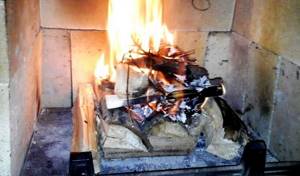
With hearth burning, the largest logs are laid below, and paper and smaller firewood are placed on top.
Advantages:
- The completeness of combustion of wood increases, due to which they release more heat.
- You reduce the release of volatile substances that pollute the chimney with soot.
- This is a more environmentally friendly way of burning.
How to do it
For hearth burning, the firewood is stacked in a pyramid: the largest logs are placed at the bottom, and the smaller ones at the top. At the very top, wood chips and paper are set on fire.
While the wood chips and paper are burning, the firebox warms up. The flame then begins to move downwards and ignite the main wood. At this point, the combustion temperature and flame intensity are sufficient for the volatile substances that make up the wood to begin to burn. Due to the completeness of combustion, firewood releases more heat, and due to uniform combustion, it burns for a long time and economically.
Primary requirements
The best firewood for heating stoves is dry. Humidity should be within 20%. This is the main requirement. The calorific value of wood depends very much on its moisture content.
Dry wood flares up and burns well, emits more heat, and smokes less. The logs should not be rotten or saturated with water. Water logs are not suitable for heating stoves.
Good firewood leaves little ash. It is advisable to harvest wood in late autumn or winter, when sap flow stops and the wood is denser.
The size of firewood for the stove depends on the size of the firebox, usually 35-40 centimeters long. The thickness is medium, thick logs split. Small logs are easy to light. They also burn quickly, which must be taken into account when preparing them.
